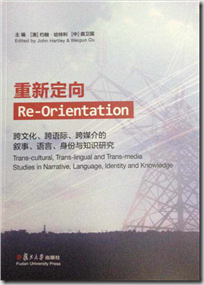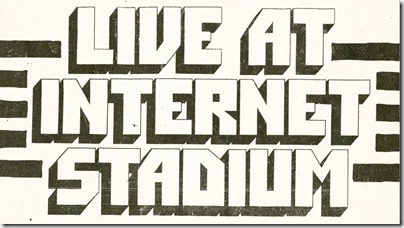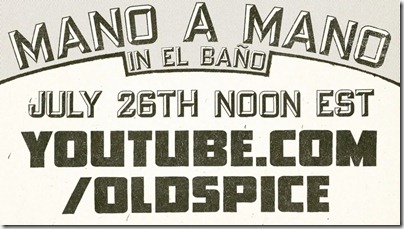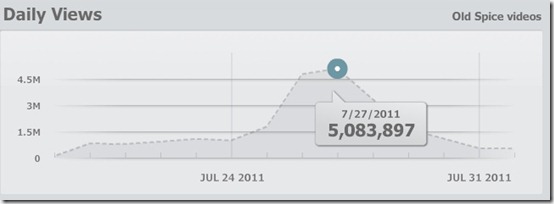Home » participatory culture
Category Archives: participatory culture
Born Digital? Presence, Privacy, and Intimate Surveillance
 I’m pleased to note that my chapter ‘Born Digital? Presence, Privacy, and Intimate Surveillance’ is out now in the Re-Orientation: Trans-lingual, Trans-cultural, Trans-media. Studies in narrative, language, identity, and knowledge collection edited by John Hartley and Weiguo Qu for Fudan University Press. The collection is the outcome of the fantastic Culture+8: New Times, New Zones symposium in 2014 which explored cultural synergies between different countries and locations in the +8 timezone which include Perth where we hosted the event, and, of course, China.
I’m pleased to note that my chapter ‘Born Digital? Presence, Privacy, and Intimate Surveillance’ is out now in the Re-Orientation: Trans-lingual, Trans-cultural, Trans-media. Studies in narrative, language, identity, and knowledge collection edited by John Hartley and Weiguo Qu for Fudan University Press. The collection is the outcome of the fantastic Culture+8: New Times, New Zones symposium in 2014 which explored cultural synergies between different countries and locations in the +8 timezone which include Perth where we hosted the event, and, of course, China.
My chapter is a key part of my Ends of Identity project; here I start to think about ‘intimate surveillance’ which is where parents and loved ones digitally document and survey their offspring, from sharing ultrasound photos to tracking newborn feeding and eating patterns. Intimate surveillance is a deliberately contradictory term: something done with the best of intentions but with possibly quite problematic outcomes. Here’s the full abstract:
The moment of birth was once the instant where parents and others first saw their child in the world, but with the advent of various imaging technologies, most notably the ultrasound, the first photos often precede birth (Lupton, 2013). In the past several decades, the question is no longer just when the first images are produced, but who should see them, via which, if any, communication platforms? Should sonograms (the ultrasound photos) be used to announce the impending arrival of a new person in the world? Moreover, while that question is ostensibly quite benign, it does usher in an era where parents and loved ones are, for the first years of life, the ones deciding what, if any, social media presence young people have before they’re in a position to start contributing to those decisions.
This chapter addresses this comparatively new online terrain, postulating the provocative term intimate surveillance, which deliberately turns surveillance on its head, begging the question whether sharing affectionately, and with the best of intentions, can or should be understood as a form of surveillance. Firstly, this chapter will examine the idea of co-creating online identities, touching on some of the standard ways of thinking about identity online, and then starting to look at how these approaches do and do not explicitly address the creation of identity for others, especially parents creating online identities for their kids. I will then review some ideas about surveillance and counter-surveillance with a view to situating these creative parental acts in terms of the kids and others being created. Finally, this chapter will explore several examples of parental monitoring, capturing and sharing of data and media about their children, using various mobile apps, contextualising these activities not with a moral finger-waving, but by surfacing specific questions and literacies which parents may need to develop in order to use these tools mindfully, and ensure decisions made about their children’s’ online presences are purposeful decisions.
The chapter can be read here.
Olympic Trolls: Mainstream Memes and Digital Discord?
 The themed issue of the Fibreculture journal on Trolls and the negative space of the internet has been released, with a raft of amazing articles, including my piece ‘Olympic Trolls: Mainstream Memes and Digital Discord?’ looking at the mainstreaming of some techniques associated with trolling, using a case study of a Facebook group lamenting the quality of Channel 9’s coverage of the 2012 Olympics.
The themed issue of the Fibreculture journal on Trolls and the negative space of the internet has been released, with a raft of amazing articles, including my piece ‘Olympic Trolls: Mainstream Memes and Digital Discord?’ looking at the mainstreaming of some techniques associated with trolling, using a case study of a Facebook group lamenting the quality of Channel 9’s coverage of the 2012 Olympics.
The abstract:
While the mainstream press have often used the accusation of trolling to cover almost any form of online abuse, the term itself has a long and changing history. In scholarly work, trolling has morphed from a description of newsgroup and discussion board commentators who appeared genuine but were actually just provocateurs, through to contemporary analyses which focus on the anonymity, memes and abusive comments most clearly represented by users of the iconic online image board 4chan, and, at times, the related Anonymous political movement. To explore more mainstream examples of what might appear to be trolling at first glance, this paper analyses the Channel Nine Fail (Ch9Fail) Facebook group which formed in protest against the quality of the publicly broadcast Olympic Games coverage in Australia in 2012. While utilising many tools of trolling, such as the use of memes, deliberately provocative humour and language, targeting celebrities, and attempting to provoke media attention, this paper argues that the Ch9Fail group actually demonstrates the increasingly mainstream nature of many online communication strategies once associated with trolls. The mainstreaming of certain activities which have typified trolling highlight these techniques as part of a more banal everyday digital discourse; despite mainstream media presenting trolls are extremist provocateurs, many who partake in trolling techniques are simply ordinary citizens expressing themselves online.
The full paper is freely available online, and as a PDF.
Angry Birds as a Social Network Market
Earlier today my colleague Michele Willson and I ran the ANZCA PreConference Social, Casual, Mobile: Changing Games which went really well, bringing together 17 games scholars from Australia and Canada, including a fantastic keynote by Mia Consalvo and plenary by John Banks.
I also had the opportunity to present today, and the slides and audio from my talk are below:
And here’s the abstract if you’re interested:
The hugely successful franchise Angry Birds by Finnish company Rovio is synonymous with the new and growing market of app-based games played on smartphones and tablets. These are often referred to as ‘casual games’, highlighting their design which rewards short bursts of play, usually on mobile media devices, rather than the sustained attention and dedicated hardware required for larger PC or console games. Significantly, there is enormous competition within the mobile games, while the usually very low cost (free, or just one or two dollars) makes a huge ranges of choices available to the average consumer. Moreover, these choices are usually framed by just one standardised interface, such as the Google Play store for Android powered devices, or the Apple App store for iOS devices. Within this plethora of options, I will argue that in addition to being well designed and enjoyable to play, successful mobile games are consciously situated within a social network market.
The concepts of ‘social network markets’ reframes the creative industries not so much as the generators of intellectual property outputs, but as complex markets in which the circulation and value of media is as much about taste, recommendations and other networked social affordances (Potts, Cunningham, Hartley, & Ormerod, 2008). For mobile games, one of the most effective methods of reaching potential players, then, is through the social attentions and activity of other players. Rovio have been very deliberate in the wide-spread engagement with players across a range of social media platforms, promoting competitive play via Twitter and Facebook, highlighting user engagement such as showcasing Angry Birds themed cakes, and generally promoting fan engagement on many levels, encouraging the ‘spreadability’ of Angry Birds amongst social networks (Jenkins, Ford, & Green, 2013). In line with recognising the importance of engagement with the franchise, Rovio have also taken a very positive approach of unauthorised merchandising and knock-offs, especially in China and South-East Asia. In line with Montgomery and Potts’ (2008) argument that a weaker intellectual property approach will foster a more innovative creative industries in China, rather than attempting to litigate of lock down unauthorised material, Rovio have stated they see this as building awareness of Angry Birds and are working to harness this new, socially-driven market (Dredge, 2012). As Rovio now license everything from Angry Birds plush toys to theme parks, social network markets can be perpetuated even by unauthorised material, which builds awareness and interest in the official games and merchandising in the long run. Far from a standalone example, this paper argues that not only is Rovio consciously situating Angry Birds within a social network market model, but that such a model can drive other mobile games success in the future.
References
Dredge, S. (2012, January 30). Angry Birds boss: “Piracy may not be a bad thing: it can get us more business.” The Guardian. Retrieved from http://www.guardian.co.uk/technology/appsblog/2012/jan/30/angry-birds-music-midem
Jenkins, H., Ford, S., & Green, J. (2013). Spreadable Media: Creating Value and Meaning in a Networked Culture. New York and London: New York University Press.
Montgomery, L., & Potts, J. (2008). Does weaker copyright mean stronger creative industries? Some lessons from China. Creative Industries Journal, 1(3), 245–261. doi:10.1386/cij.1.3.245/1
Potts, J., Cunningham, S., Hartley, J., & Ormerod, P. (2008). Social network markets: a new definition of the creative industries. Journal of Cultural Economics, 32(3), 167–185. doi:10.1007/s10824-008-9066-y
Joss Whedon, Dr. Horrible, and the Future of Web Media?

I’m pleased to announce that my article Joss Whedon, Dr. Horrible, and the Future of Web Media? is finally available. Here’s the abstract:
In the 2007 Writers Guild of America strike, one of the areas in dispute was the question of residual payments for online material. On the picket line, Buffy creator Joss Whedon discussed new ways online media production could be financed. After the strike, Whedon self-funded a web media production, Dr. Horrible’s Sing-Along Blog. Whedon and his collaborators positioned Dr. Horrible as an experiment, investigating whether original online media content created outside of studio funding could be financially viable. Dr. Horrible was a bigger hit than expected, with a paid version topping the iTunes charts and a DVD release hitting the number two position on Amazon. This article explores which factors most obviously contributed to Dr. Horrible’s success, whether these factors are replicable by other media creators, the incorporation of fan labor into web media projects, and how web-specific content creation relates to more traditional forms of media production.
The official version is available in the new issue of Popular Communication (vol 11, no. 2). If you can’t access the article due to the paywall, then there’s an open access pre-print available at Academia.edu.
Facebook, Student Engagement, and the ‘Uni Coffee Shop’ Group
Here are the final slides and audio from Internet Research 13 in MediaCityUK, Salford. My last paper ‘Facebook, Student Engagement, and the ‘Uni Coffee Shop’ Group’ was presented as part of a panel about Facebook and Higher Education which also featured work by my collegues Mike Kent, Kate Raynes-Golide and Clare Lloyd.
The abstract:
While the curriculum, lecturers and tutors teaching Internet Communications via Open Universities Australia (OUA) have been engaging with students for several years using Twitter (see Leaver, 2012), in the past Facebook had been largely left alone since this was viewed as a more casual space where students might interact with each other, but not with teaching staff. However, in the last two years, more and more students have created groups to use Facebook as a discussion space about their units, often attracting a significant proportion of students from that unit. While these groups are important, of even more interest is the establishment of the group called the ‘Uni Coffee Shop’. Unlike the unit-specific groups, the Coffee Shop group, established by two Internet Communications students but open to anyone studying online via OUA, affords group support, social connectivity and a persistent online space for conversation which does not disappear or grow stagnant when students complete a specific unit.
This paper will outline an investigation into the effectiveness of the Uni Coffee Shop group as a student-created space for engagement and informal learning. Three modes of inquiry were used: a textual analysis of the common topics of discussion in the group over several months; a quantitative survey of members of the Coffee Shop group; and several follow-up qualitative interviews with Coffee Shop group members, including the two students who administer the group. In addition, the paper includes the perspectives of teaching staff who have been invited to join the group by students and who, at times, answer specific questions and engage with students in a less formal manner. In detailing the results of these mechanisms, this paper will argue that fostering student-run spaces of engagement using Facebook can be a very effective means to create spaces of engagement and informal learning (Krause & Coates, 2008; Greenhow & Robelia, 2009); the support students give each other can persist over the length of an entire degree; and teaching staff engaging with students in their space, often on their terms, can create a better rapport and a stronger sense of connectivity over the length of a student’s entire degree (and potentially beyond). A student-run Facebook group also provide a space where teaching staff and students can interact using the affordances of Facebook without staff having to explicitly ‘friend’ students (something many staff are reluctant to do for a range of reasons).
References
Greenhow, C., & Robelia, B. (2009). Informal learning and identity formation in online social networks. Learning, Media and Technology, 34(2), 119 – 140.
Krause, K., & Coates, H. (2008). Students’ engagement in first‐year university. Assessment & Evaluation in Higher Education, 33(5), 493-505. doi:10.1080/02602930701698892
Leaver, T. (2012). Twittering informal learning and student engagement in first-year units. In A. Herrington, J. Schrape, & K. Singh (Eds.), Engaging students with learning technologies (pp. 97–110). Perth, Australia: Curtin University. Retrieved from http://espace.library.curtin.edu.au/R?func=dbin-jump-full&local_base=gen01-era02&object_id=187303
News and Trolls: Olympic Games Coverage in the Twenty-First Century
I’m at MediaCityUK in Salford for the annual Association of Internet Researchers conference (IR13) and today gave the first of three papers I’m involved with. Today’s was part of a great pre-conference session organised by Holly Kruse. My talk was called “News and Trolls: Olympic Games Coverage in the Twenty-First Century”; it’s very much a work in progress, but the slides are embedded below in case anyone’s interested.
Sadly I didn’t record the audio, so the slides may lack contextualisation.
Digital Culture Links: May 10th
Links – catching up – through to May 7th:
- YouTube’s content explosion: 60 hours of video every minute [Online Video News] – ““More video is uploaded to YouTube in one month than the 3 major US TV networks created in 60 years.” Hunter Walk, YouTube Director of Product Management, Google in a tweet. Google told TechCrunch Monday that YouTube users now upload 60 hours of video every minute.” (That’s almost 10 years of content uploaded each day. Wowzers!)
- Angry Birds maker Rovio reports £60.8m revenues for 2011 [Technology | guardian.co.uk] – Angry Birds has generated hundreds of millions of downloads for Finnish mobile games firm Rovio Entertainment, but the company’s financial results for 2011 reveal just how lucrative the franchise was that year. The company has reported total revenues of €75.4m (£60.8m) for 2011, with earnings before tax of €48m (£38.7m). 30% of Rovio’s revenues for the year came from its consumer products business, which includes merchandising and licensing income. Rovio says that the total number of Angry Birds game downloads reached 648m by the end of 2011, with 200m monthly active users (MAUs) across all platforms. As context for that figure, social games publisher Zynga had 21m MAUs at the end of March 2012, while also acquiring US developer OMGPOP, whose Draw Something mobile game currently has 33.9m MAUs.
- Angry Birds Space rockets to 50m downloads in 35 days [Technology | guardian.co.uk] – “Angry Birds Space, the latest mobile game from Finnish developer Rovio, has reached the 50m downloads mark just 35 days after its release on 22 March. The publisher claims on its blog that this makes its tile “the fastest growing mobile game yet”, beating all previous records for the Angry Birds series. The announcement may be a deliberate reminder to challengers like Draw Something of the scale of Angry Birds. Draw Something was released on 1 February, notched up 35m downloads in its first seven weeks – yes, a similar time period to that required for Rovio’s new milestone – and was promptly acquired by Zynga for $180m. Draw Something passed 50m downloads in early April, while another recently-released game, Temple Run, is also past that milestone. “While numbers like this certainly say something about the popularity of Angry Birds, for us the main goal is to keep creating fun new experiences that everybody can enjoy,” explains Rovio on its blog.”
- London 2012: Olympic photo ban ‘unenforceable’ [BBC News] – “Olympic bosses have admitted their ban on spectators posting videos and images on websites will be unenforceable. In the terms and conditions of ticket purchases for the London 2012 Games it states ticket holders cannot publish images, video or sound online. However, Sir Keith Mills, deputy chairman of organisers Locog, said “we live in an internet world… and there’s not much we can do about it”. He said a “common sense approach” would be used to protect media rights. Spectators will be able to watch many events, including the cycle road race, triathlon and marathon, without a ticket. But the ticket conditions as they currently stand prohibit ticket holders from posting photos and personal footage of the Olympics on sites such as Facebook, Twitter and YouTube.”
- British ISPs forced to block The Pirate Bay [WA Today] – “Britain’s High Court has ordered the country’s internet service providers to block file-sharing website The Pirate Bay. A High Court judge told Sky, Everything Everywhere, TalkTalk, O2 and Virgin Media to prevent access to the Swedish site, which helps millions of people download copyrighted music, movies and computer games. Music industry group BPI welcomed the order by justice Richard Arnold that the service providers block the site within the next few weeks. BPI chief executive Geoff Taylor said sites like The Pirate Bay “destroy jobs in the U.K. and undermine investment in new British artists.” The service providers said they would comply with the order. A sixth provider, BT, has been given several weeks to consider its position, but BPI said it expected BT would also block the website. Providers who refuse could find themselves in breach of a court order, which can carry a large fine or jail time.”
- Google Drive– Google’s cloud storage drive – the GDrive or Google Drive – has arrived, offering 5Gb for free, with the option to upgrade storage to 25GB for $2.49/month, 100GB for $4.99/month or 1TB for $49.99/month. While Google’s entry is a late entry to the cloud storage arena, the integration with Google’s other products, and Android in particular, will probably see the GDrive rapidly rise in popularity.
- Man jailed over nude Facebook photos [WA Today] – “A jilted boyfriend who put nude pictures of his former lover on Facebook has been sentenced to six months jail – a landmark social media-related conviction for Australia and one of just a handful in the world. Ravshan ”Ronnie” Usmanov told police: ”I put the photos up because she hurt me and it was the only thing [I had] to hurt her.” … Privacy experts say Usmanov’s case has exposed the ”tip of the iceberg” of online offences that are rarely punished.
In sentencing the 20-year-old, NSW Deputy-Chief Magistrate Jane Mottley said she was ”deterring both the offender and the community generally from committing similar crimes”. ”New-age technology through Facebook gives instant access to the world … Incalculable damage can be done to a person’s reputation by the irresponsible posting of information through that medium. With its popularity and potential for real harm, there is a genuine need to ensure the use of this medium to commit offences of this type is deterred,”.” - The Filtered Network – Mark Zuckerberg of facebook buying Instagram for $1 BILLION [YouTube] – Fun remix of the trailer for The Social Network, playing with the question of what exactly Facebook purchased for a billion dollars!
- Introducing Facebook Offers [YouTube] – Facebook Offers = Facebook’s answer to Scoopon.
- 4% Of Children On Facebook Are Under 6 Years [AllFacebook] – I’m a bit suspicious of these statistics since they’re generated by a company that markets tools allowing parents to monitor the social networking of their kids, but the numbers certainly warrant attention: “Kids are learning to use computers at ever younger ages, and some are figuring out how to lie about their age to access Facebook. The site has a minimum age requirement of 13, yet four percent of children using the site are under age six. That’s the most startling statistic in the infographic compiled by Minor Monitor, one of the newer entrants into the already crowded market for surveiling kids’ activity online. According to the vendor, barely half of parents use technology to keep a digital eye on children, despite worries about sexual predators and bullying.”
- Google+ redesigns and says 100m of its 170m users used it in past 30 days [Technology | guardian.co.uk] – “Google says 170m people have registered for its Google+ service since it was launched 10 months ago – and that 100m have “engaged” with the service at least once in the past 30 days and 50m have engaged with the service at least once a day in the past month.”
Old Spice Guy … versus Fabio?!?

It has been just over a year since Isaiah Mustafa’s Old Spice Man character moved from traditional advertising spaces and conquered the internet with the fantastic rolling campaign of YouTube ‘reply’ videos. I am a huge fan of that 2010 campaign and think it’s still one of the best examples of a dusty brand embracing participatory culture completely and reaping the rewards. This week, the next iteration in that social media campaign has kicked off, with cultural manhood cliché Fabio attempting to wrestle away Mustafa’s Old Spice man crown. Mustafa accepted the challenge and now a ‘battle’ rages ‘Live at Internet Stadium’ with the two both replying to challenges and comments from participants online.
Commentators have already jumped on this as an example of advertising embracing transmedia storytelling in what seems a quite meaningful way. For example, Hypervocal comments:
We don’t know how this will all play out today, but the Old Spice Guy campaign has now transcended mere advertising into the realm of long form digital storytelling. It’s fairly incredible what Old Spice and W+K have established. We’re seeing a full-on social media duel unfold across Twitter and YouTube that doubles as a quasi-advertising campaign (except that nobody cares about the Old Spice connection, they care about the characters and story) — people are being called out directly on both platforms, dates and times for the duel were announced, and tweets and videos will surely be published in a real-time, but coordinated, environment later today.
I agree that this has transcended traditional advertising, but in doing so it asks to be judged in terms of storytelling, not just advertising. Now perhaps I’m not the right person to ‘get’ this duel; I’ve never found Fabio a convincing character and just don’t find him funny. (Nor it seems does the internet; his challenge has more ‘dislikes’ than likes, but Mustafa’s reply is almost entirely ‘liked’.) However, for me, as a narrative experience, the Old Spice campaign has jumped the shark. The ‘duel’ doesn’t appear to be over yet, and perhaps I’ll be won over, but for now both the manly men vying for the Old Spice crown seem burdened by their roles, not excited by it. Fabio is a weary icon at best, and Mustafa’s lines just aren’t as funny as last year.

Update: Surprising no one, the Old Spice guy (Mustafa) won the ‘duel’, but the pathway there, through numerous odd videos, was a bizarre one, even by internet standards. Just watch the final showdown video to see odd things really got:

Update 2: YouTube have run the numbers, and the Old Spice Guy versus Fabio videos (over 100 of them) clocked up 22 million views in a week, with the viewing peaking with just over 5 million views in a single day.
Everything is a Remix–Part 3 – Creativity
Kirby Ferguson has followed up the episode on film with another fabulous offering in the Everything is a Remix series. This one looks at creativity and debunks the myth that creativity is the product of a few (arguing, instead, it’s always the product of many):
Digital Culture Links: April 28th 2011
Links for April 13th 2011 through April 28th 2011:
- Copyright – 25 April 2011 [Rocketboom] – This 5 minute Rocketboom episode focuses on copyright in the US, looks at what Fair Dealing can and can’t do (especially with regarding to sampling) with reference to the Mickey Mouse protection act (Copyright Term Extension) of 1998.
- YouTube founders’ Delicious new venture [The Age] – Delicious lives on, and may yet prosper! “Yahoo! has sold Delicious to YouTube founders Chad Hurley and Steve Chen, who promised to continue and grow the popular social bookmarking site. Financial details of the transaction were not disclosed. Hurley and Chen, who sold YouTube to Google for $US1.65 billion in 2006, said they planned to integrate Delicious with their new San Mateo, California-based internet company AVOS. “We’re excited to work with this fantastic community and take Delicious to the next level,” AVOS chief executive Hurley said in a statement. “We see a tremendous opportunity to simplify the way users save and share content they discover anywhere on the web,” Hurley said. The YouTube co-founders said they would seek to use Delicious to “develop innovative features to help solve the problem of information overload.””
- No Tweets Allowed at the Royal Wedding [Mashable] – “Any 140-character loving guests attending the April 29 wedding of Prince William and Catherine (Kate) Middleton will be sorely disappointed, as signal-blocking technology will be installed at Westminster Abbey to nix cellphone use. According to Yahoo, the idea was suggested by members of the royal family and confirmed by police and security. They hope nixing phones and tweeting will cut down on news photos and videos featuring cellphone-toting guests, distracting ringtones and info about the wedding getting out ahead of the ceremony.”
- YouTube star TomSka ‘makes thousands’ every month [BBC – Newsbeat] – “… 20-year-old student Tom Ridgewell, [is] one of a new generation of YouTube stars making thousands of pounds through the site every month. “I like to think I work in comedy,” he says. “I just try to make funny videos really – ones that make me laugh.” He’s written, produced and directed dozens of short films, sketches and cartoons. But get onto his channel and it’s the numbers that really stand out: 55 million views and 220,000 subscribers – numbers he’s been able to translate into money. “They put adverts around your videos and you get a cut of that,” Tom explains. He wouldn’t give away specific numbers but told Newsbeat he earns between £3,500 and £7,000 each month. The student makes his money through YouTube’s partner programme.”
- Many under-13s ‘using Facebook’ [BBC News] – “Almost half of British children aged 9 to 12 are using social networking sites, despite minimum age limits, a report claims. One in five has a Facebook page, even though rules say they must be 13, according to EUKidsOnline. The report’s authors suggest that removing such requirements would make it easier to monitor online behaviour. However, children’s charity Kidscape criticised the idea and warned it would lead to more cyber bullying. The research, carried out by the London School of Economics for the European Commission, was based on a survey of 25,000 young people – aged between nine and 16 – from across Europe. It asked if they maintained a social networking profile. In the UK, 43% of 9 to 12-year-olds answered yes, along with 88% of 13 to 16-year-olds.” [EU Kids Online Social Networking, Age and Privacy Report PDF]
- E-Book Sales Surpass Print: Is This a Win or a Loss for the Publishing Industry? [RW Web] – eBooks surpass print in US sales: “When the Association of American Publishers (AAP) released its sales figures for the month of February [2011], the headlines were easy to compose: e-books have surpassed print in all trade categories. E-books have become the format-of-choice, these figures suggest. In January, the AAP said that e-book sales were up 116% year-over-year, and for the month of February that growth accelerated even further. February 2011 sales were up 202.3% from the same time last year. “
- iPhone 4 About To Be Flickr’s Top Camera. Point & Shoots? Pretty Much The Opposite. [TechCrunch] – The iPhone 4 is now the second most popular camera being used by Flickr photo sharers, well on the way to becoming the most popular. In comparison, point’n’click cameras are declining in use. This article also laments Flickr’s failure to create a mobile app, especially since it’s very clear that a large percent of vernacular photography will be done on mobile devices.
- White House unveils cyber ID proposal [SMH] – “The White House has unveiled a plan [for] the creation of a single, secure online credential. “By making online transactions more trustworthy and better protecting privacy, we will prevent costly crime, we will give businesses and consumers new confidence, and we will foster growth and untold innovation,” President Barack Obama said in a statement. “That’s why this initiative is so important for our economy,” Obama said. The National Strategy for Trusted Identities in Cyberspace (NSTIC) proposes the creation of secure and reliable online credentials that would be available to consumers who want to use them. It would be private-sector driven and participation would be voluntary. The “identity ecosystem” would involve the use of a single credential – unique software on a smartphone, a smart card or a token that generates a one-time digital password, for example, – and would eliminate the need to remember multiple passwords.”
- YouTube Live: The makeover continues – youtube, web, media streaming, internet [PC World Australia] – “Another sign that Google is positioning YouTube to compete with broadcast and cable TV, as well as other video-streaming services like Hulu and Netflix: YouTube Live, a new branch of the hugely popular video-sharing service, debuted on Friday. As its name suggests, YouTube Live provides live-streaming events rather than the recorded videos found on the regular YouTube site. “With over 2 billion views a day, it’s easy to think about YouTube as a place to watch videos recorded in the past. But you’ve told us you want more — and that includes events taking place right now,” Google managers Joshua Siegel and Christopher Hamilton wrote in a Friday post on The Official YouTube Blog.”
- Cisco plans to shut its Flip camcorder business [The Age] – This is extremely disappointing news (and appears quite silly in business terms, too!): “Cisco Systems, one of the titans of the technology industry, said it is killing the Flip Video, the most popular video camera in the US, just two years after it bought the startup that created it. It appears to be a case of a big company proving a poor custodian of a small one, even one that makes a hit product. Cisco never meaningfully integrated the Flip Video into its main business of making computer networking gear. Flip Video users are now lamenting the demise of a camera that broke new ground. It was inexpensive, pocketable and very easy to use, from shooting to editing and online sharing. These features have been copied by many other manufacturers, but the Flip Video still outsells them.”



